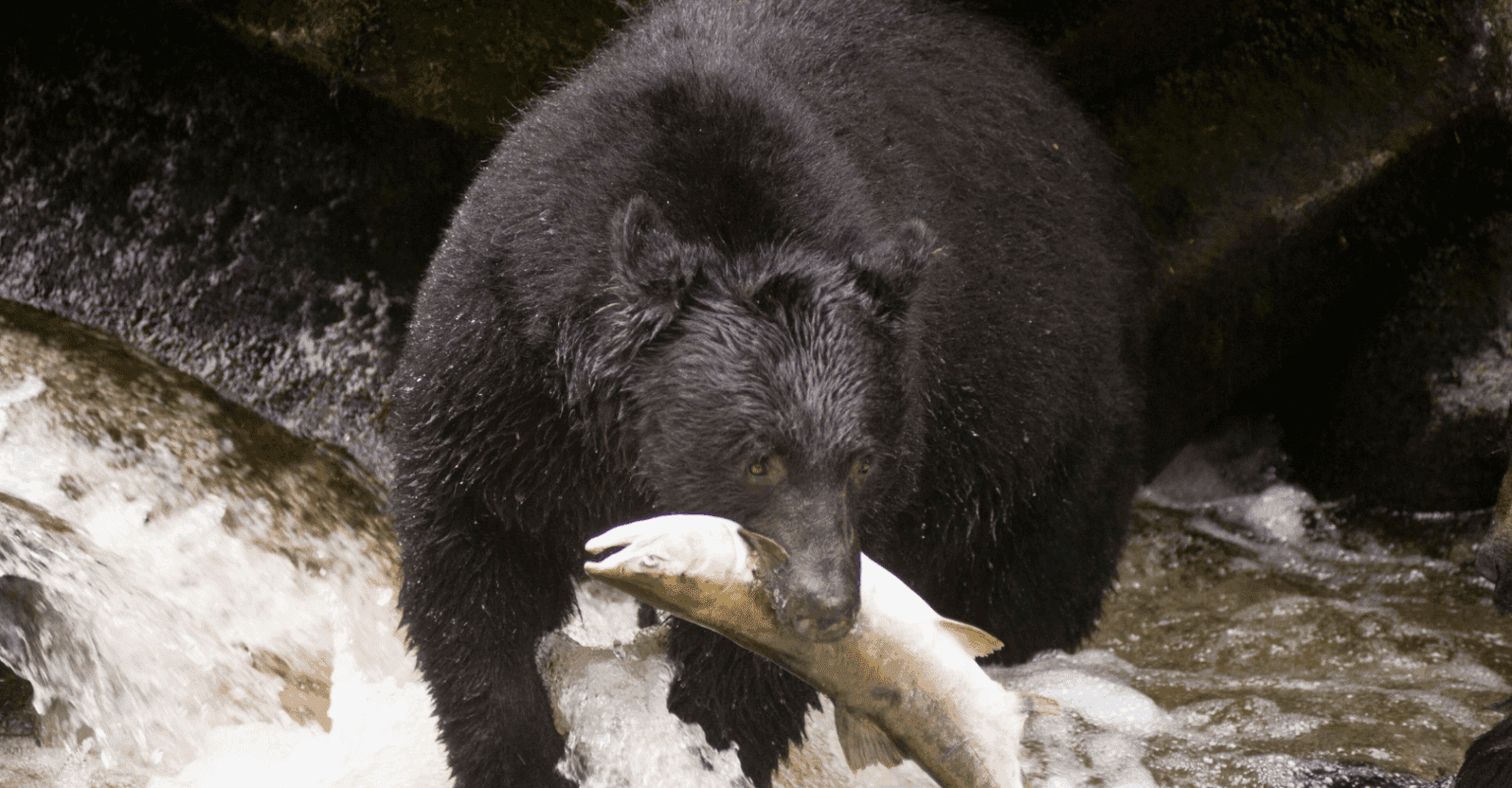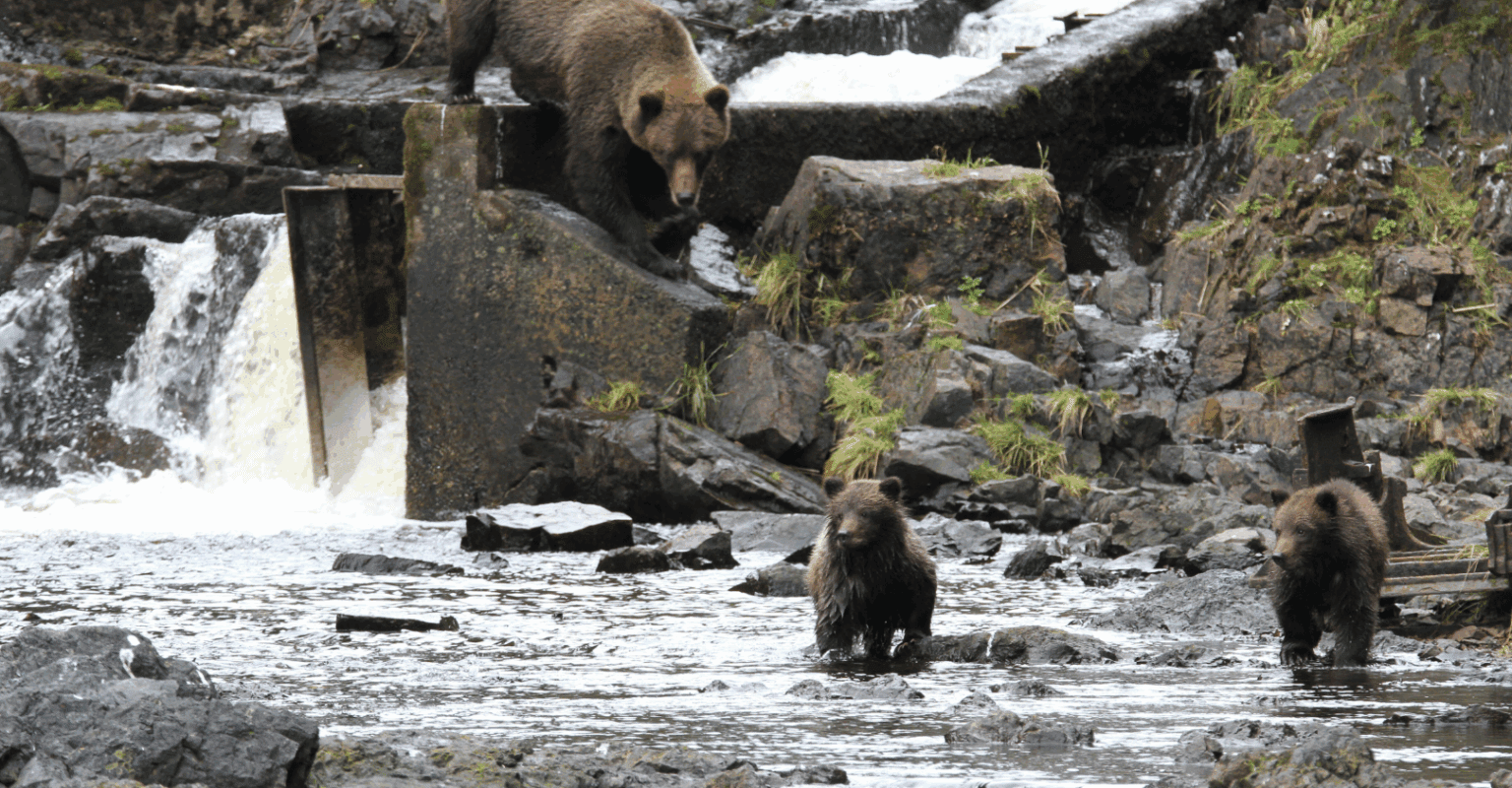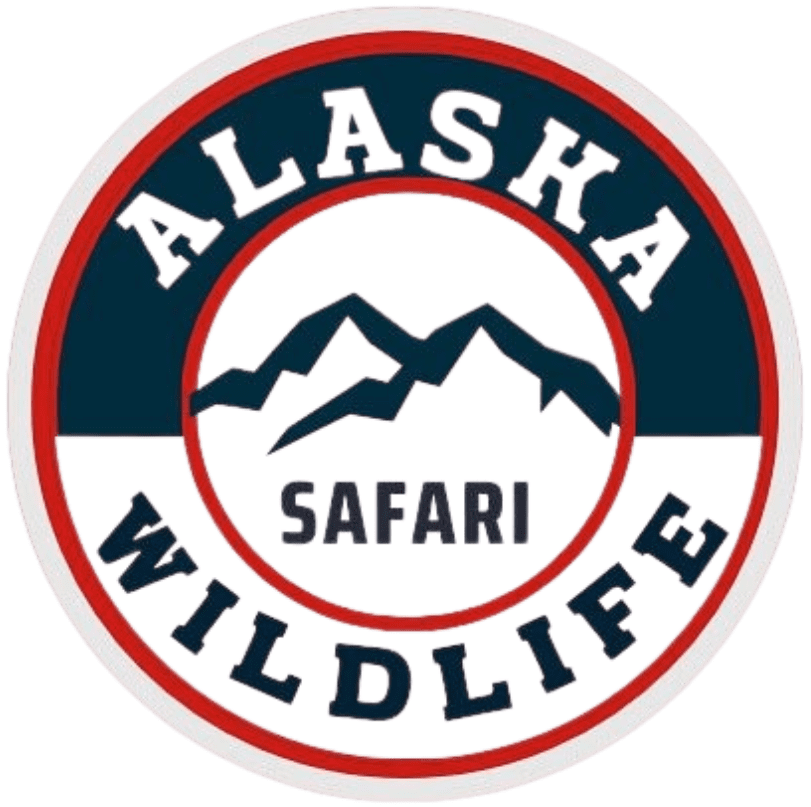Bear Tours in Ketchikan: See Wild Alaska Up Close
By Lauren – Ketchikan Wildlife Guide, Alaska Wildlife Safari Tours
When you think of Ketchikan, you might picture rain, totem poles, or salmon — but what really makes this place unforgettable is how closely the land and wildlife move together. Out here, the rainforest, the salmon, and the bears all follow the same rhythm. When the fish return to spawn in the summer, the black bears emerge from the trees like clockwork — quiet, powerful, and completely focused on the feast ahead.
And if you know where to look, you can watch it all happen right in front of you.
This Isn’t Just a Forest — It’s the Tongass
Ketchikan sits on Revillagigedo Island, surrounded by the Tongass National Forest, the largest temperate rainforest on Earth. Some of the Sitka spruce and western hemlocks here are over 800 years old and stretch 200 feet into the sky. The Tongass holds more carbon per acre than almost any forest on the planet and is home to more than 400 species of animals, including bald eagles, Sitka deer, wolves — and, of course, black bears.
And despite what people picture when they hear “Alaska,” there are no grizzly bears in Ketchikan. Just black bears — and plenty of them.
Salmon Season = Bear Season
From late June to early September, five Pacific salmon species push upstream to spawn: king, sockeye, coho, chum, and pink. Each completes a journey that’s both brutal and beautiful — and when they arrive, the bears follow.
Need a cheat to remember them?
“King, Sockeye, Coho, Chum, and Pink — five salmon you should know in a blink.”
One sockeye salmon can pack over 4,500 calories, which is why a bear might eat 20 or more in a single day. After they spawn, the salmon die — and their bodies become food for the entire ecosystem. Bears drag them into the forest, where the nutrients feed trees, bugs, birds, and even the soil itself. Scientists have even found salmon DNA in tree rings far from the nearest creek. Everything here is connected.

Where the Locals Go: Herring Cove
Just 15 minutes south of downtown Ketchikan, there’s a place we take our guests — a quiet creek where you can park, step out, and if your timing’s right, watch bears fish in the wild.
It’s called Herring Cove, and it’s where the Whitman Lake Salmon Hatchery releases thousands of salmon every summer. The bears know this spot well. They return year after year, especially around low tide, and on cool, cloudy days when fish are easiest to catch.
This isn’t a zoo, or a boardwalk with rails. It’s the real thing. Some days, the bears are bold and out in the open. Other days, they’re shadows in the trees. But when it happens — when one steps into view — it’s unforgettable.
“There was one morning,” I tell my guests, “we were standing by the creek just as the fog lifted, and this big black bear came down out of the trees, grabbed a salmon, and walked off without ever looking at us. That’s the kind of moment you never forget — quiet, real, and perfectly wild.”
Black Bears Up Close (From a Safe Distance)
After more than 10 years of guiding, I’ve learned a lot from watching bears — and I love sharing that with guests. A few things you might not expect:
They’re not always black. Some are cinnamon, brown, or even bluish-gray.
They’re incredibly smart. Their sense of smell is 7x better than a bloodhound’s.
They high-grade their fish. When salmon are abundant, they’ll often eat just the skin, eggs, or brains for maximum fat.
They’re quiet and cautious. You’ll often hear the salmon splash before you ever hear the bear.
They’re strong but solitary. Black bears are usually alone — unless it’s a mom teaching her cubs.
Track tip: Look for human-like front paw prints and longer, oval-shaped back prints. If you see both? You’re on their trail.
Planning Your 2025 Ketchikan Bear Tour
Here’s what I always recommend if you’re planning a bear tour in Ketchikan:
Come between late June and early September. That’s peak salmon season.
Check the tide tables and aim for about an hour before or after low tide.
Dress for rain. The wettest days often have the best bear sightings.
Bring quiet shoes, a rain jacket, and a zoom lens or binoculars.
Stay still, stay quiet, and let the bears come to you.

Want to See It for Yourself?
I guide with Alaska Wildlife Safari Tours, and we’d love to take you out to Herring Cove this summer. Our tours are small, relaxed, and respectful — no big buses or rushed groups. Just real moments in a wild place.
And if you’re visiting by cruise ship? Our tours are built just for you. We know your time is limited, and our itineraries are designed so you can:
Visit the hard-to-reach areas outside of town
Get back in time for lunch and shopping
Still enjoy the best of downtown Ketchikan after your wildlife adventure
Check out our two Summer 2025 Ketchikan Bear Tours:
Frequently Asked Questions About Bear Tours in Ketchikan
When is the best time to see bears in Ketchikan?
Late June through early September, especially during salmon runs and around low tide. Cloudy, rainy days are ideal.
Are there grizzly bears in Ketchikan?
No. Ketchikan is on an island (Revillagigedo Island), and only black bears live here — no grizzlies or brown bears.
Can I see bears without a guide?
Yes, but a guided tour helps you time it right, stay safe, and learn as you go.
Where exactly is Herring Cove?
It’s about 15 minutes south of downtown Ketchikan by car or tour shuttle, right next to Whitman Lake Hatchery.
What should I bring on a bear tour?
Rain jacket, waterproof shoes, neutral clothes, binoculars, a camera with zoom, and a quiet presence.
